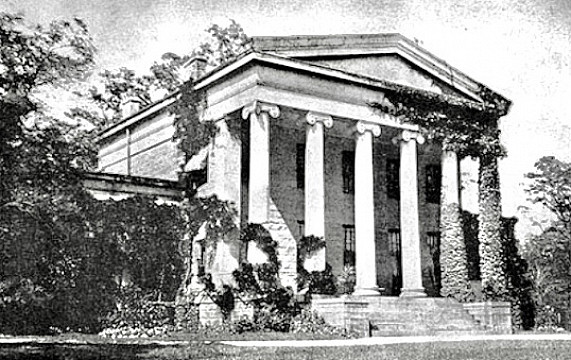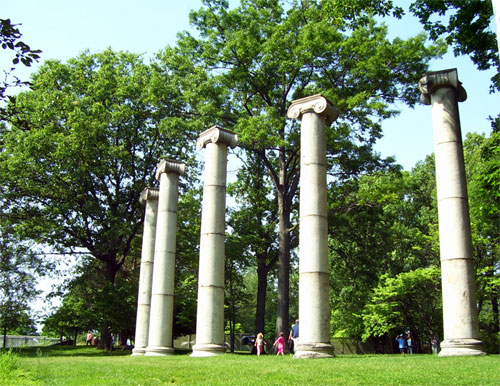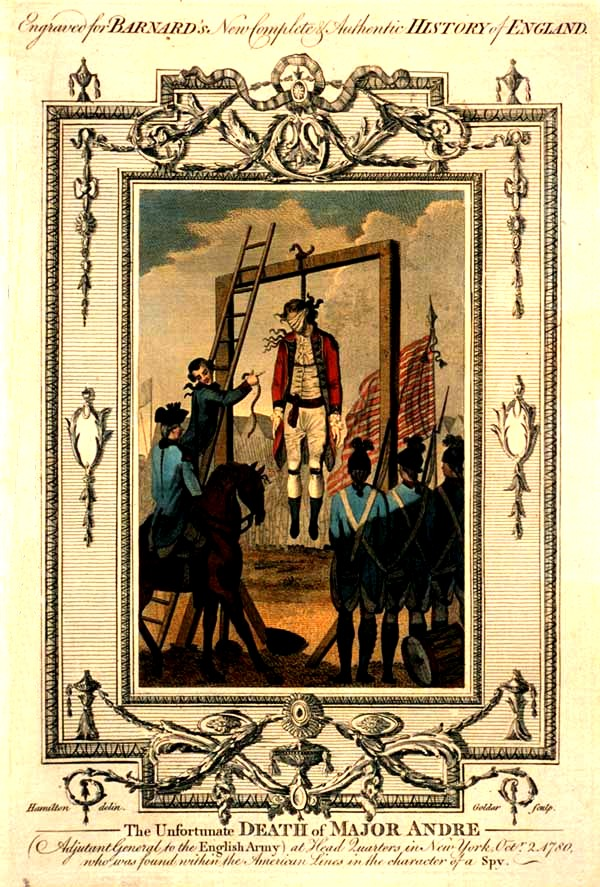created 2025-06-09, & modified, =this.modified
Why I’m reading
Often I travel along the Hudson to these places. I carried this book with me in my last overnight trip, and leafed through it. Now I want to read it more deeply, so I can consider the places I see with a different understanding.
In the early 1600s when the Dutch sailed past an expansive rock that jutted into the Hudson, they encountered large gatherings of Lenape frantically dancing, jumping and singing around enormous bonfires. For the natives, this was a religious experience to ask for favor of the Great Spirit – to the devout Christians these activities terrified them. So they called this Duyvil’s Danskammer, or Devil’s Dance Chamber.
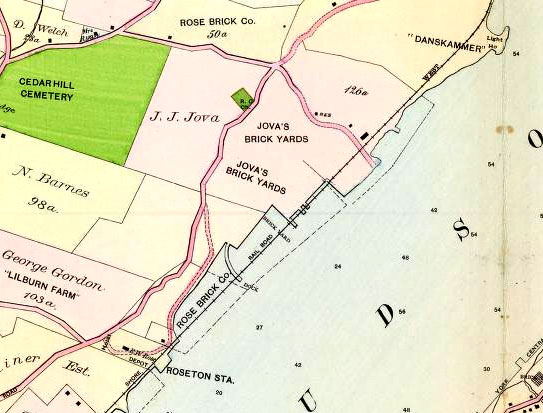
The rock was lost when the steamer the Thomas Cornell was wrecked here on a foggy night in 1882 and before the brickyard was built some ten years before then, it “was beautiful, crowning a wooded plateau, with a sweeping view across Newburgh bay to the Highlands (with) a delightful bathing-beach of firm white sand… and a dock where large vessels could land. The river was very gay in those pre-railway days, dotted with hundreds of sails, sloops, and schooners…“.
Thought
Looking further, the Danskammer (dance hall) name was used for a mansion in the area. The remains (5 of six columns) of the columns went on to be part of the Storm King Art Center.
The river was very gay in those pre-railway days, dotted with hundreds of sails, sloops, and schooners plying between New York and Albany.
The Capture of Major John André
Tarrytown/Sleepy Hollow – Patriot’s Park. André Brook or Clark’s Kill is the boundary.
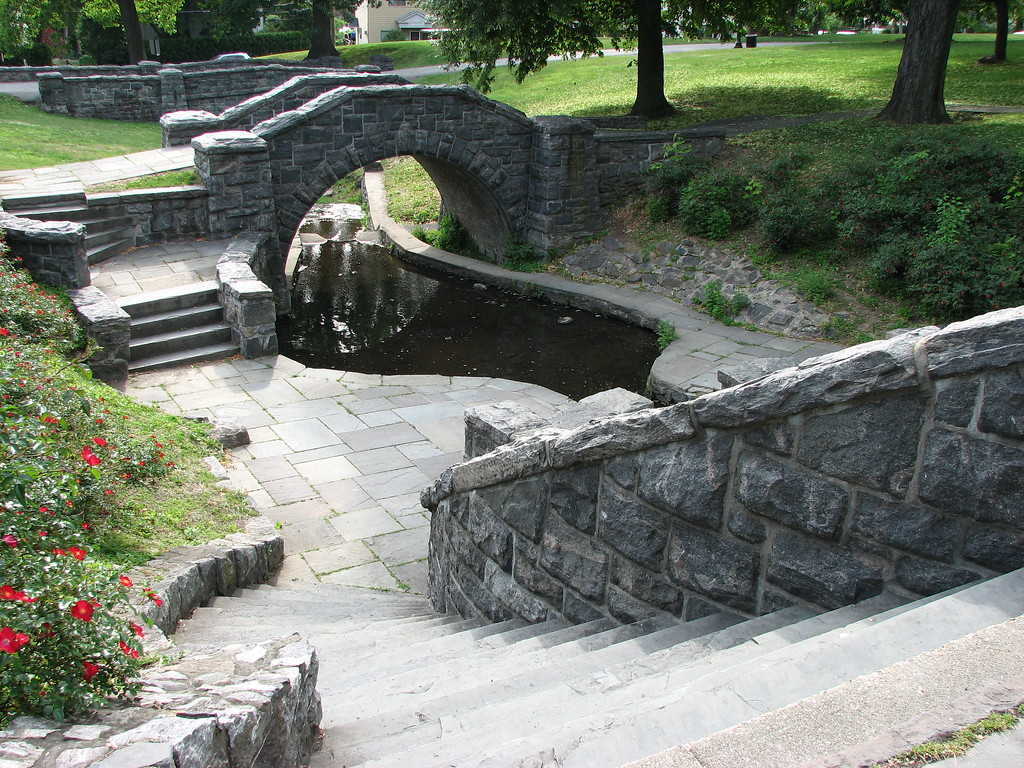
“In the centre of the road stood an enormous tulip-tree, which towered like a giant above all the other trees of the neighborhood, and formed a kind of landmark. Its limbs were gnarled and fantastic, large enough to form trunks for ordinary trees, twisting down almost to the earth, and rising again into the air. It was connected with the tragical story of the unfortunate André, who had been taken prisoner hard by; and was universally known by the name of Major André’s tree.” -The Legend of Sleepy Hollow
Arnold was alerted of the capture of John André, and the discovery of his treachery against his own army, and escaped. André was imprisoned at the Continental Army’s headquarters at Tappan and was found guilty of being a spy in disguise and under an assumed name. On October 2nd, 1780 he was hanged.
Thought
Find a bit on John D. Rockefeller’s war on snakes. He was a afraid of snakes since his youth and wasn’t able to walk on parts of his estate. Men clambered all over his estate, slaying snakes and returning them for 25 cents a skin.
This estate is now park of Rockefeller State Park preserve.
“I will pay 25-cents for each snake killed on my estate. I desire to rid my land of these reptiles, and any one may enter the war of extermination.” JOHN D. ROCKEFELLER -The New York Times, June 12 1906.
Raven Rock
Some mention was made also of a woman in white, that haunted the dark glen at Raven Rock and was often heard to shriek on winter nights before a storm, having perished there in the snow – Washington Irving
Part of the Rockefeller State Park.
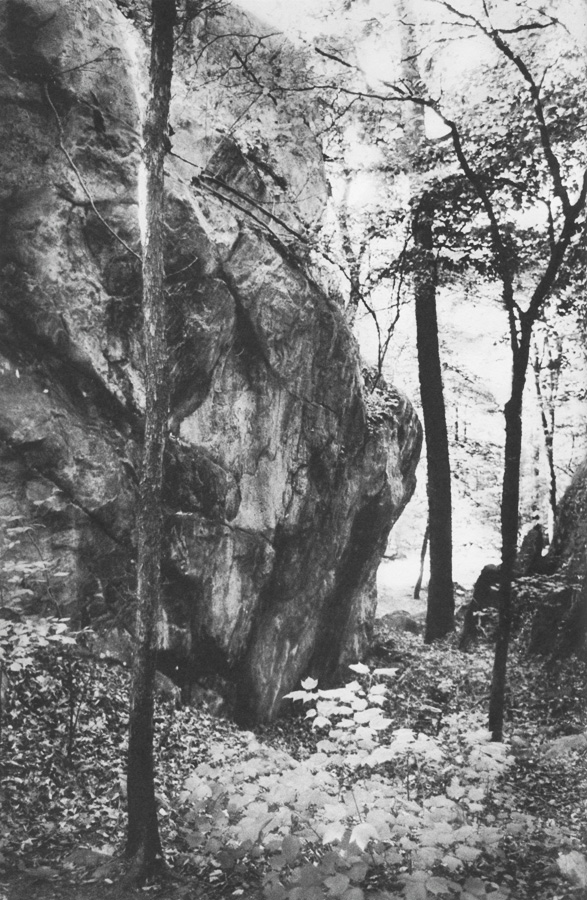 Does not resemble the shape of a raven, but rather large flocks that would gather around its summit. The main legend goes a woman, seeking refuge from the snow, took shelter at Raven rock. The snow continued unabated and she settled into a blanket blanket of snow, and a sleep from which she’d never awaken. In spring she was found, and buried in Sleepy Hollow Cemetery. Her spirit continues to reside in the rock, and can be heard during stormy weather. Her figure occasionally take shape of snows and mists that develop around the rock as well.
Does not resemble the shape of a raven, but rather large flocks that would gather around its summit. The main legend goes a woman, seeking refuge from the snow, took shelter at Raven rock. The snow continued unabated and she settled into a blanket blanket of snow, and a sleep from which she’d never awaken. In spring she was found, and buried in Sleepy Hollow Cemetery. Her spirit continues to reside in the rock, and can be heard during stormy weather. Her figure occasionally take shape of snows and mists that develop around the rock as well.
The rock used to have an old carriage road that passed nearby, but now it is remote and lonely.
Bear Rock Petroglyph
Thought
This is the first in this collection that I have directly been to. I recall searching off the beaten path for this rock, finally to return to the main trail where it lay directly in the path.
At the time I also found a study which outlined all of the designs, now fragments which had eroded after time or were inscrutable.
Design 3 will be called a wild turkey-grouse, as is suggested by the three featherlike tail lobes and the elongated neck and head. This design, though distinguishable from the surface of the rock, does not have the same clear pecked and rubbed character of the two large designs and therefore is in the unclear category. Design 4 will be left unidentified, though modern observers call it a starlike design. Natural contours in the rock are clearly used here to enhance the design. Design 5, composed of two joined ellipses, is unclear and unidentifiable. Design 7, composed of a series of U-shapes, is unidentifiable. Design 13 is U-shaped
Prior to European colonialization there were 12,000 Native Americans living the Hudson Valley.
Regarding Petroglyphs, no written language existed so they couldn’t be read but they were used to record a story or event, and spark a memory.
Memory hole
The text mentions a practice in New England called “Memory holes” – which I am not familiar with in this context.
rel:Holes (this is amazing)“As they conversed with their new companions, the Englishmen learned that to walk across the land in southern New England was to travel in time. All along this narrow, hard-packed trail were circular foot-deep holes in the ground that had been dug where any remarkable act had occurred. It was each person’s responsibility to maintain the holes and to inform fellow travelers of what had once happened at that particular place so that many things of great antiquity are fresh in memory.
Account of 1624 Pilgrim Leader Edward Winslow
“Instead of records and chronicles, where any remarkable act is done, in memory of it, they make a round hole in the ground about a foot deep. When others passing by behold, they inquire the cause and occasion of the same … And least such holes should be filled, or grown up by any accident, as men pass by they will oft renew the same: by which means many things of great antiquity are fresh in memory.”
Apart from being a record they served as religious sites, to commune with spirits and give thanks, to seek luck. The black bear was a figure of deep reverence to the people of the area.
The rock’s western side has a clear figure of a bear, but also twin deer, a turkey, grouse and star. There is also a serpent on a small adjacent boulder.
Estimated date is 1400CE.
Balanced Rock
rel: Ringing Rocks
A 60 to 90 ton pink granite boulder, propped up by six cone shaped limestones in the town of North Salem.
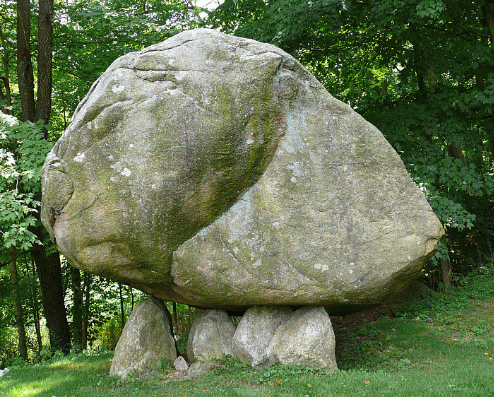 Modern geologists dismissed it to be nothing more than a curious glacial erratic, with purely coincidental placement.
Modern geologists dismissed it to be nothing more than a curious glacial erratic, with purely coincidental placement.
The structure resembles man-made European structures called cromlechs and dolmens, which mostly serve as grave markers.
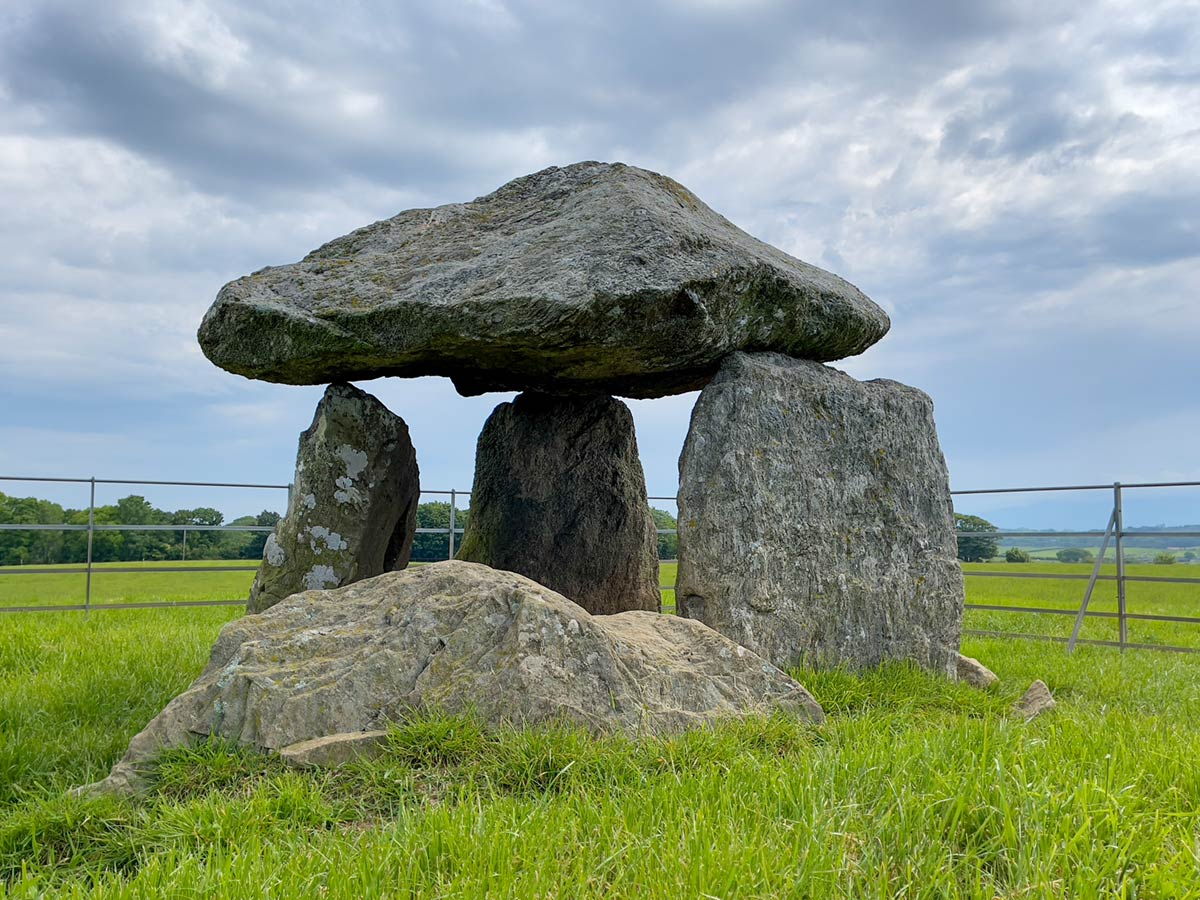
In 1824 geologist John Finch wrote an essay describing the balanced rock as such “magnificent cromlech, and the most ancient and venerable monument which America possesses.” In that age the idea of the Ice Age was still in infancy, an₫ perched boulders were sometimes thought of as relics of the biblical flood in the Noah’s Ark story.
Pollepel Island
Now known colloquially as Bannerman’s Island, the castle-like structure was formerly uses as an arsenal to store gunpowder, weapons and memorabilia. But before this the island had many uses, many wound up in legends – the stomping grounds of imps and and unlucky, forbidden place.
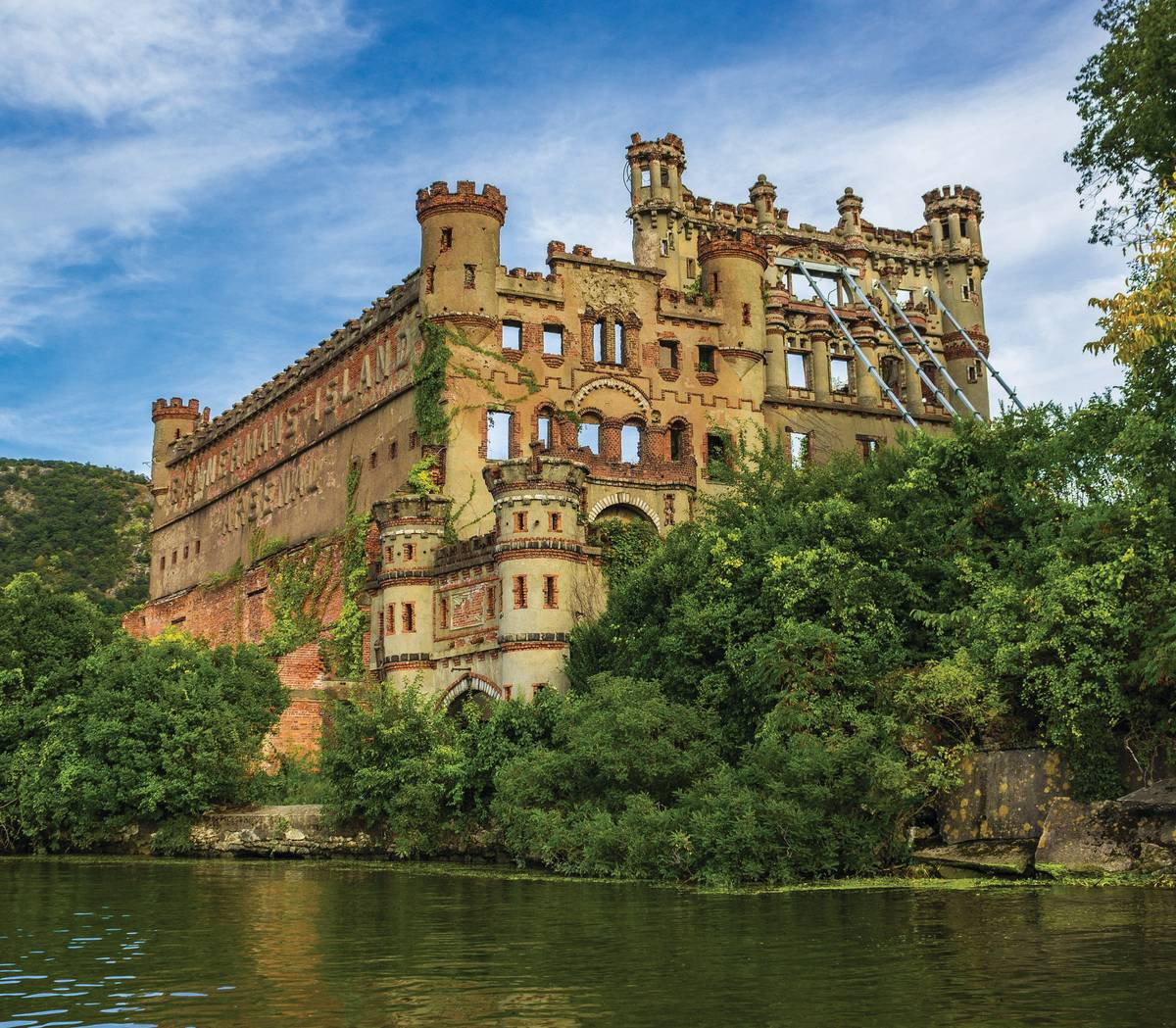
The name could be in reference to the Dutch word of pot-ladle but there is a story of Polly Pell. Two men competed for her marriage, a renowned minister and a farmer and childhood friend of Polly. One day the childhood friend took her out on a sleigh ride on the frozen Hudson. The reverend had heard the ice was unsafe and headed off on skates to warn them. When he arrived the ice was fissured, which had left Polly in danger. As the ice flows broke up, Polly confessed, sobbing, that she loved her childhood friend more than the reverend, and asked for forgiveness. Fearing the ice would break and they’d all die, the reverend married them on their crumbling raft. After the ceremony was completed, their ice island drifted into a small island where they were able to disembark. The next morning the reverend made it to the shore again, and sent a boat to receive the stranded lovers. The island furthermore took her name.
1920 disaster – due to black powder there was an explosion. A 25 foot long section of the wall was hurled 1,000 feet across the Hudson onto the train tracks. The main castle remained but hundreds of windows for miles were damaged.
Dover Stone Church
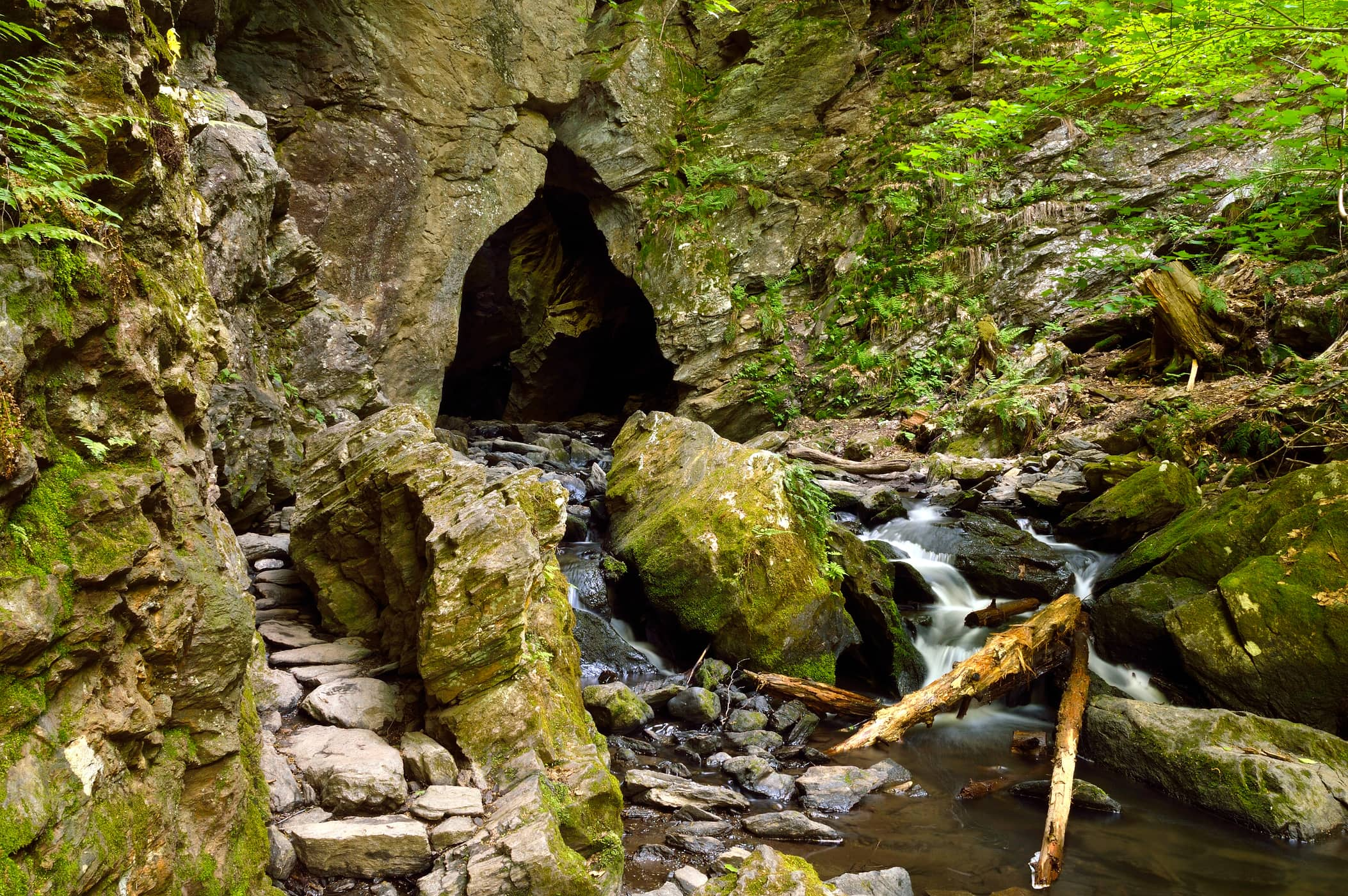
Access to the Stone Church remains identical as it was in the 1877.
The opening of the cavern is burrowed into a vertical wall of tough metamorphic rock. The entrance resembles a mouse hole chewed through wall molding, though standing 20 feet high. Because the passage is situated directly due West, in the afternoon bright sunny rays are cast, and there’s a massive rock named “Preacher’s Pulpit.”
The stones in the streambed are likely to contain dark-reddish brown beads, with a dull metallic sheen. These are small garnets.
The church was created at the end of the last Ice Age, as a tremendous torrent of glacial meltwater raced through the ravine.
By the 1830s it was a well known tourist attraction, and advertisements marked it as an important pilgrimage.
1838 Poughkeepsie Casket advertised, Dover Stone Church,
is admirably calculated to inspire the contemplative mind with devotional feelings, and to lift the thoughts of the great ARCHITECT of the universe, besides whose works the pigmy creations of proud man are merely atoms.
Spook Rock
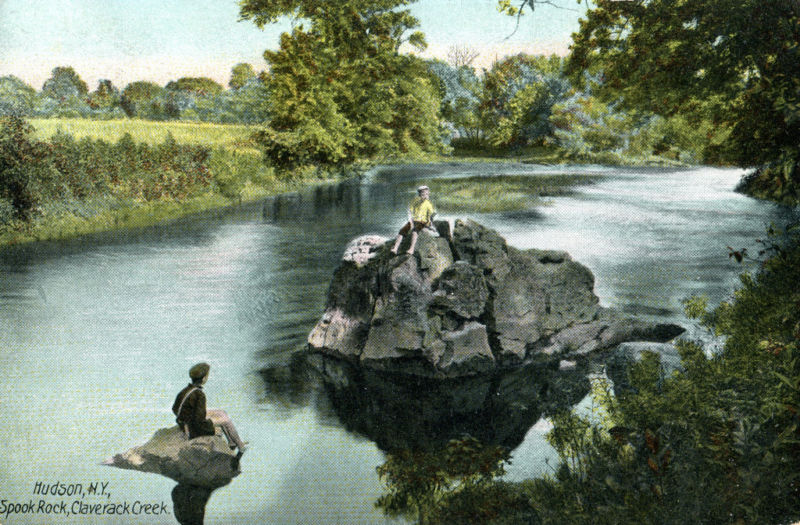
Legends has it that the chief of the Mahicans lived in a well defensed wigwam at the top of Becraft mountain (due to his tribes numerous enemies), and had a beautiful daughter “whose soft dark eyes and raven locks, and nut-brown skin were a bewitchment. ”
An enemy warrior approached and became enamored with her. The two would sneak away, despite the two being from warring tribes. After some time the girl had enough courage to speak to her father of it, but it was dismissed.
They met again this time deciding to run away from the warring together. Just as they were describing this there was sound of distant thunder and within minutes a storm was upon them. A bolt of lightning hit the cliff and the fragment of rock was dislodged, careening into the creek below and taking with it the two lovers.
Another version tells the story as if they met on the boulder in the creek and were taken away in the ensuing flood.
The last part of the legend maintains that whenever the nearby church bell rings the rock turns over and the lovers briefly reappear, and a travel guide from 1890 mentions in moonlight the rock is visited by neighboring swains and their sweethearts.
Echo Lake and Overlook Mountain
The lake the rests at the bosom of the mountain is called Echo lake because of the quality of reverberation. Yell or shout at the top of your lungs at the water’s edge and you’re said to hear a response from the nearby cliffs surrounding the lake. In 1874 a small part of men and women ventured to test the echoing qualities and were met with disappointing results.
One of the male members of the party with a rich and sonorous voice took upon himself the responsibility of waking up the slumbering echo. “Helloa” rung out full and clear over the still water, but no response. Somewhat vexed he repeated in a louder tone, “Helloa!” Then came an answer, sure enough across the rocky bluff, “Shut up you idiot or I’ll send a charge of shot in you.” Without a word the part left for the hotel, and never again tried the virtue of this echo.
The Overlook Mountain House opened its doors in 1871. It was three story structure with French roof that contained 140 rooms. Such mountain houses increasingly supplanted a European trip. The hotel attracted Ulysses S. Grant who stayed for two days. He journeyed to the summit with a procession of at least 100 people. During the ascent which was led by Grant and two little girls, the guests sang choruses and patriotic songs.
Two years later, April Fools 1875 the hotel caught fire and burnt down. It was rebuilt, but burned again. During WWI it waws rumored that German spies used the base to transmit secrets via radio.
Built again, the hotel this time was made with reinforced concrete, but before it could be finished the owner died. His grandson was tasked to finish it but went to WWII, he returned to find it looted and it was left abandoned.
rel: Serpents
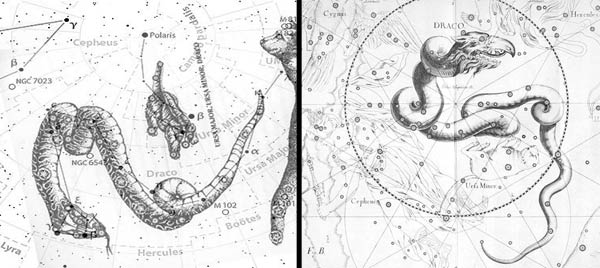
Recently prior to building the radio tower, a series of stone walls and cairns were discovered on South overlook. They appear to form the constellation Draco and have serpent heads. Draco can be seen directly above.
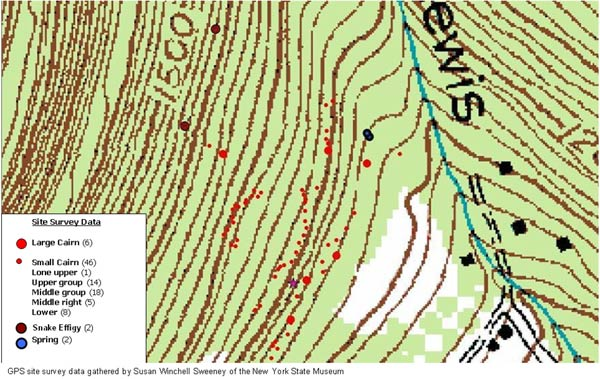
Most mainstream archeologists are skeptical.

